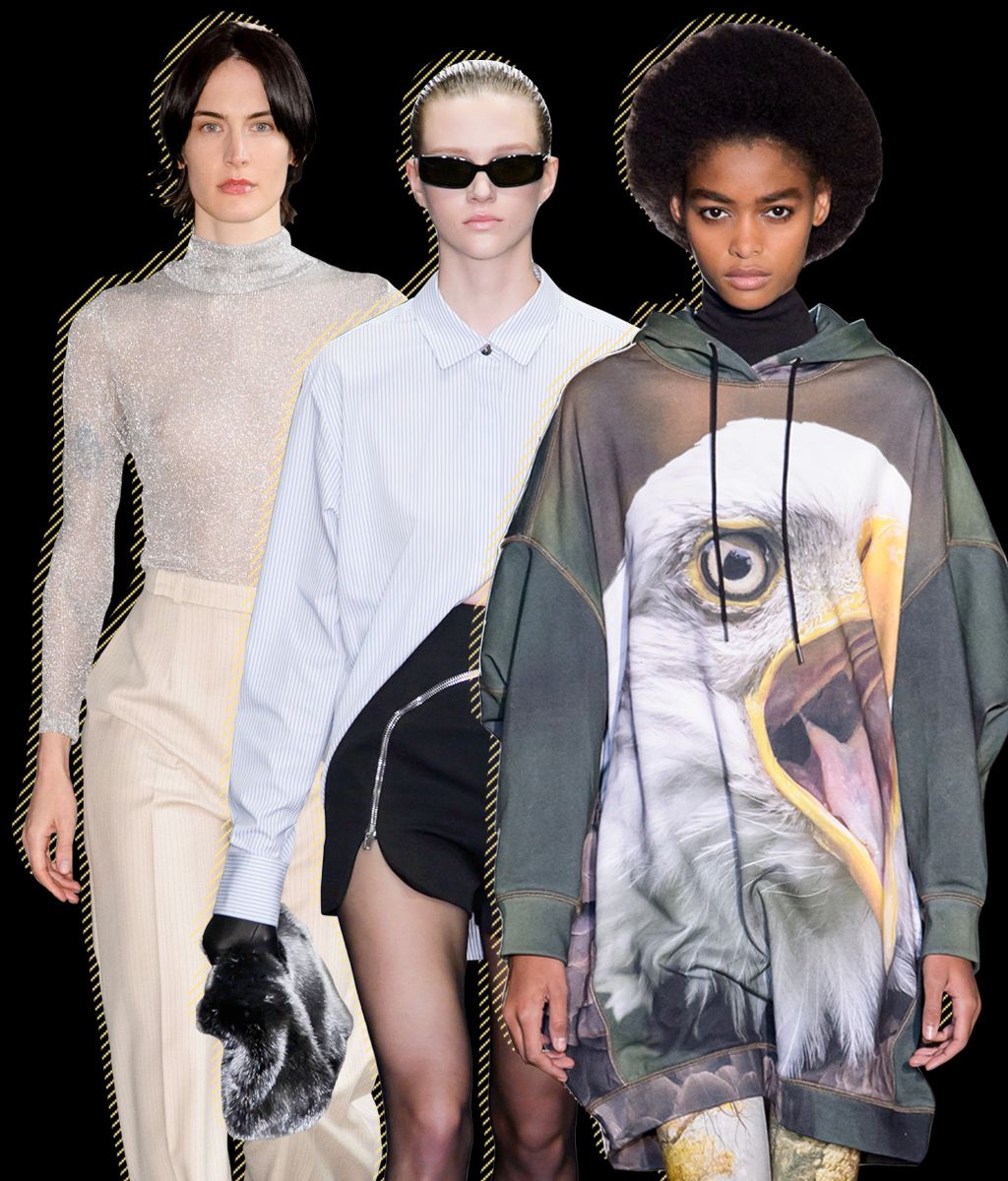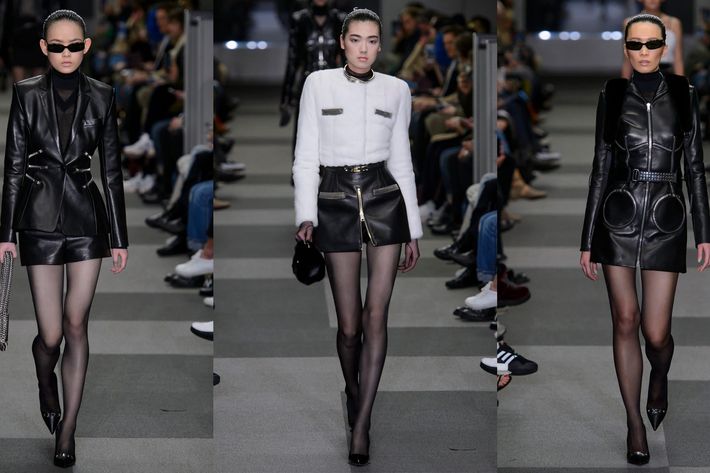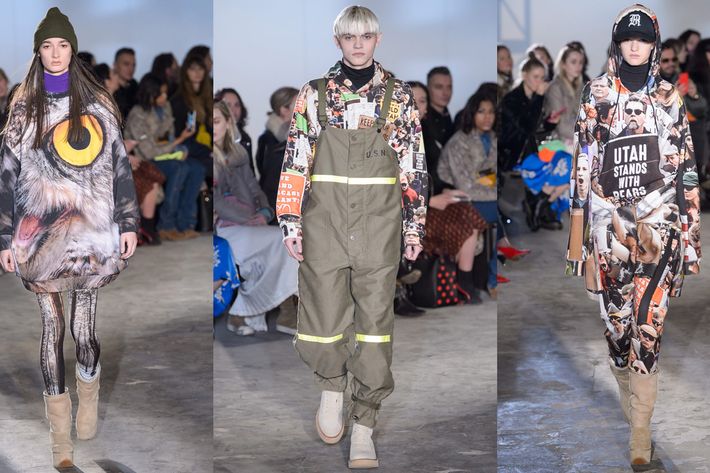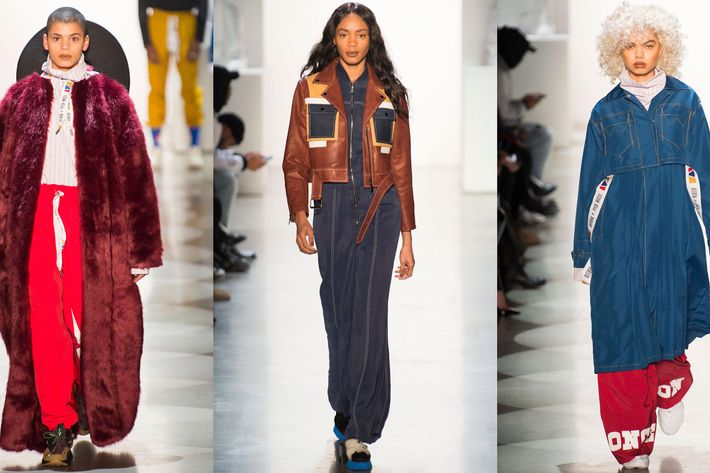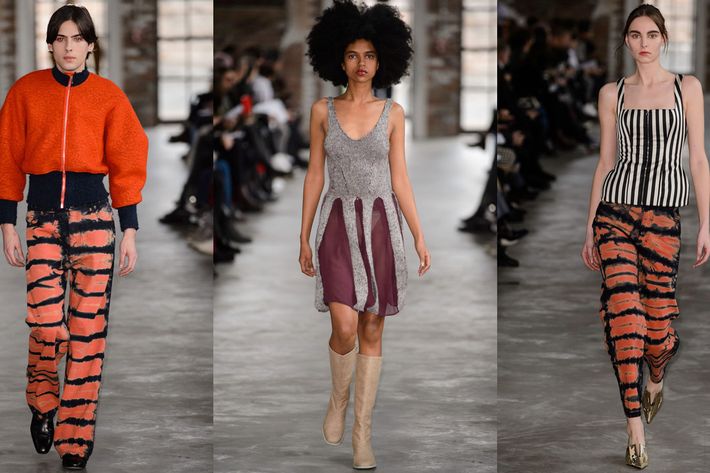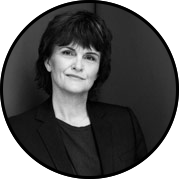
After an excruciatingly slow start to New York Fashion Week, the sense of movement and change was everywhere yesterday.
Alexander Wang took editors back to the former Condé Nast headquarters at Four Times Square, now a graveyard of cubicles and dangling wires, to show that he, too, had moved on. His collection of sleek black minis and silver-shot leathers, based on the archetype of the forbiddingly chic editor, was as sharp as any he has done. And though editors are less influential than when Wang was an intern at Vogue in the early aughts, and though the pencil-thin silhouette has a whole crop of competitors, the show worked precisely because of that reality. You don’t really think of Wang’s shows as a vehicle for fashion history — more like a party — but this was a clever way for an insider to both acknowledge these changes and step briskly forward.
Other designers addressed new, more political, realities too. Chris Leba of R13 based his spirited show on the ongoing fight to protect public lands and wilderness, using recent protests at Bears Ears National Monument in Utah as inspiration for photo-printed sweatshirts and oversized tops dominated by an eagle’s head. The collection’s strength was actually less in its political awareness than in its associations with the great outdoors — say, a brightly colored down coat that suggests a sleeping bag or a spree of hunter camouflage, including overalls. A designer for many years at Ralph Lauren, Leba knows how to mine American themes and then highlight what feels newest and most youthful. This season, it’s those over-scaled shapes and in-your-face imagery.
In a show called American Also, Kerby Jean-Raymond of Pyer Moss dealt with racial inclusion, specifically the black laborers who worked as early cowboys. “It’s just a way of acknowledging that we got left out of the Western American story,” Jean-Raymond said of his collection, which included beautifully done coats and pants with top-stitching, long crisp cotton shirts over wide pants, and artful Western-style jackets in leather patchwork.
For the underrated Jean-Raymond, who recently bought out his business partner, giving him sole control over Pyer Moss, this show marked a personal change. He also showed a collection for Reebok, along with a new version of the DMX Fusion sneaker. I loved the bravado of those pieces, in particular a denim-blue dress worn over wide red track pants, the touches of glamour in the furs and big scarves, and the abstract use of the American flag. We’ve seen lots of iterations of athletic gear, but Jean-Raymond’s stands apart for its colors (patriotic plus deep red, mustard, and burgundy) and its silhouette; those ultrawide pants look amazing. (The Reebok-Pyer Moss line will be in speciality stores in August.)
“It was a tough sell,” Jean-Raymond said of the shapes. “I told the people at Reebok, ‘Trust me on this.’” He added with a laugh, before well-wishers flooded into the backstage, “Everybody’s just doing a logo and some sweatpants. We gave them work to do.”
The New York and L.A.-based label Eckhaus Latta also made significant strides, without losing that almost indescribable quality of cool which drew a huge crowd to Bushwick on Saturday afternoon. Indeed, part of the pleasure of watching the collections of Zoe Latta and Mike Eckhaus is how they plug their ever-growing knowledge of fashion and the industry back into their designs. Yet they remain artists at heart.
This season, they worked more on tailoring and blending their signature knitwear with woven pieces, like a sweet dress with a knitted bodice that extends into a dark chiffon skirt, and a puffy bomber jacket in a nubby red wool with a knitted waistband. They also showed their version of a portrait-collar jacket in Regency stripes and a knitted ensemble that seemed a takeoff on the Chanel suit. It might seem a bit odd that designers who got their start by reworking dead-stock fabrics and showing the funky results on friends should now be drawn to historical examples of couture. But that openness and curiosity is also what keeps Eckhaus Latta moving.
The killer look came at the very last: a striped corset over slim pants in a blurry, rust-red and black print. The play of stripes and bold print, along with the bustier, made me half-wonder if Latta and Eckhaus had looked at vintage Lacroix. But that was the beauty of the design: If they were inspired by French couture, it was only the trace of an impression that remained.


